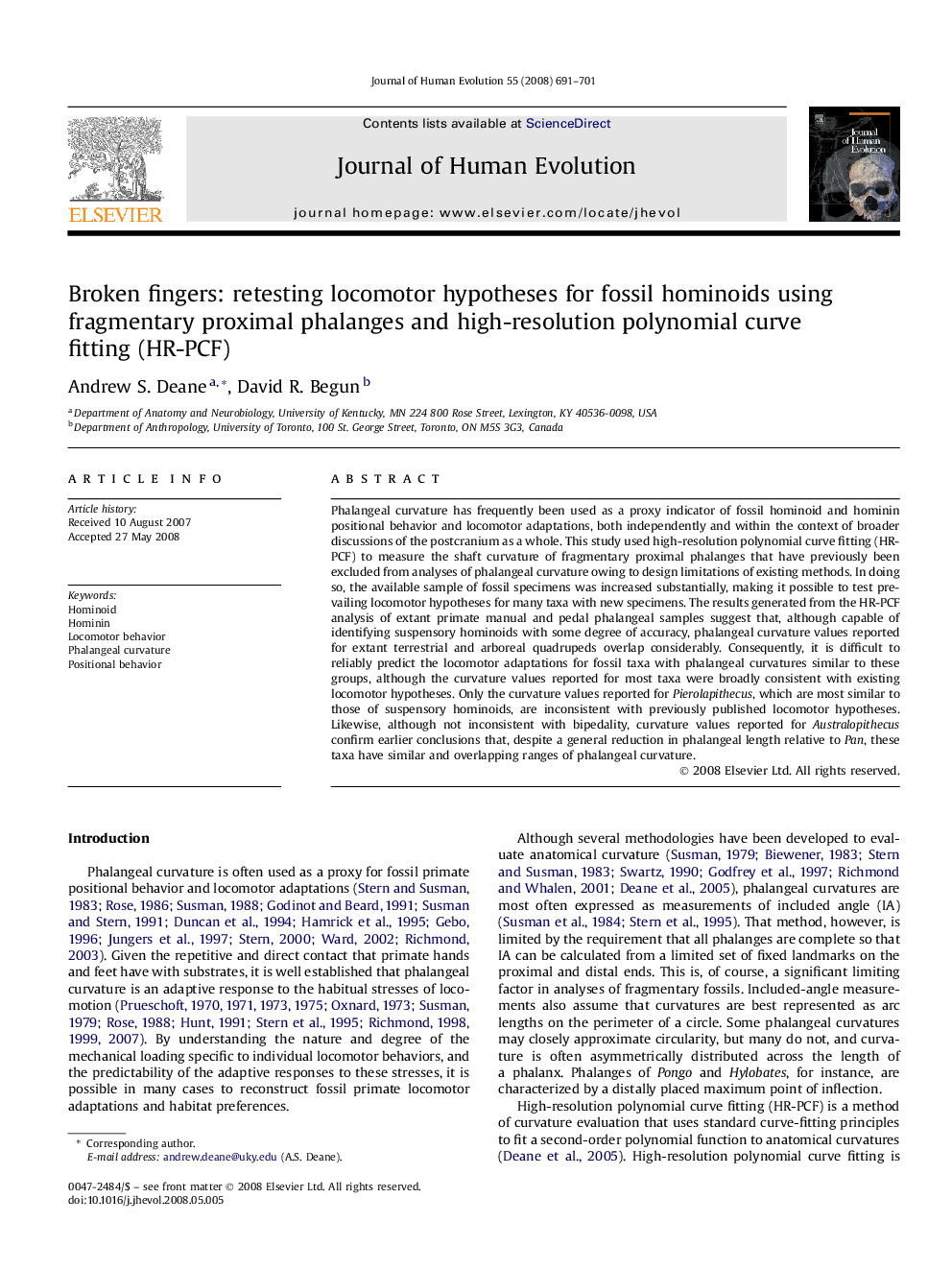| کد مقاله | کد نشریه | سال انتشار | مقاله انگلیسی | نسخه تمام متن |
|---|---|---|---|---|
| 4557245 | 1329537 | 2008 | 11 صفحه PDF | دانلود رایگان |

Phalangeal curvature has frequently been used as a proxy indicator of fossil hominoid and hominin positional behavior and locomotor adaptations, both independently and within the context of broader discussions of the postcranium as a whole. This study used high-resolution polynomial curve fitting (HR-PCF) to measure the shaft curvature of fragmentary proximal phalanges that have previously been excluded from analyses of phalangeal curvature owing to design limitations of existing methods. In doing so, the available sample of fossil specimens was increased substantially, making it possible to test prevailing locomotor hypotheses for many taxa with new specimens. The results generated from the HR-PCF analysis of extant primate manual and pedal phalangeal samples suggest that, although capable of identifying suspensory hominoids with some degree of accuracy, phalangeal curvature values reported for extant terrestrial and arboreal quadrupeds overlap considerably. Consequently, it is difficult to reliably predict the locomotor adaptations for fossil taxa with phalangeal curvatures similar to these groups, although the curvature values reported for most taxa were broadly consistent with existing locomotor hypotheses. Only the curvature values reported for Pierolapithecus, which are most similar to those of suspensory hominoids, are inconsistent with previously published locomotor hypotheses. Likewise, although not inconsistent with bipedality, curvature values reported for Australopithecus confirm earlier conclusions that, despite a general reduction in phalangeal length relative to Pan, these taxa have similar and overlapping ranges of phalangeal curvature.
Journal: Journal of Human Evolution - Volume 55, Issue 4, October 2008, Pages 691–701